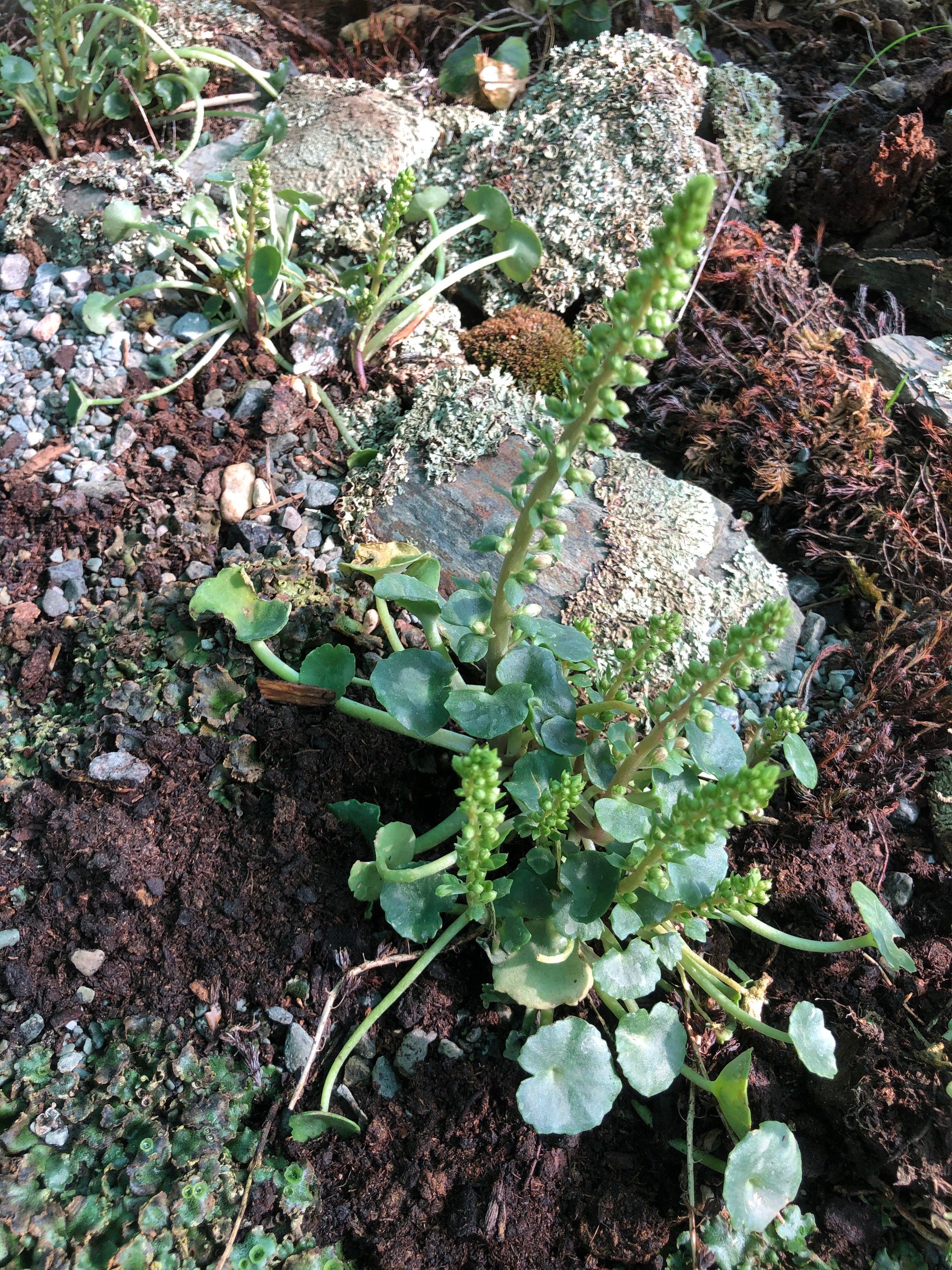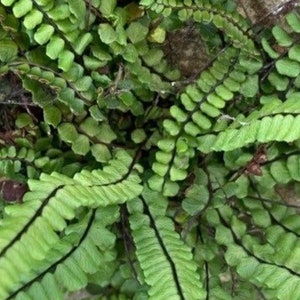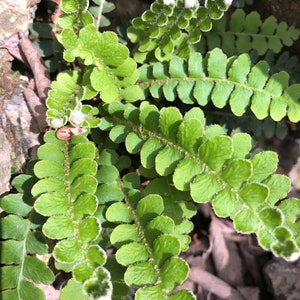







Terrarium plants
3 Umbilicus rupestris tuberous roots, the navelwort, penny-pies or wall pennywort, Perfect for terrariums vivariums and rock wall gardens!
$7.13
-
DetailsWe ship with DHL Express for international shipping, which is extremely fast arriving in a few days! so your plants arrive in perfect condition :) Our flat rate for express shipping is 22 euros, so we encourage you to buy a selection of our products (plants, moss, substrates) as we do free shipping worldwide after 100 euros of items are bought with coupon FREESHIPPING100.
If you are experiencing any problems during checkout please contact me and we can sort it out. (ie. item it is not available for your area).
You can also go to my new store:
mosswholesale.myshopify.com
Perfect for terrariums vivariums and rock wall gardens!
Umbilicus rupestris, the navelwort, penny-pies or wall pennywort, is a fleshy, perennial, edible flowering plant in the stonecrop family Crassulaceae in the genus Umbilicus so named for its umbilicate (navel-like) leaves.
Both the name "navelwort" and the scientific name Umbilicus come from the round shape of the leaves, which have a navel-like depression in the center.
Wall pennywort grows to an average of 25 cm (9.8 in) high. The pallid spikes of bell-shaped, greenish-pink flowers of this plant first appear in May, and the green fruits ripen through the summer.
The plant is found in southern and western Europe, often growing on shady walls or in damp rock crevices that are sparse in other plant growth (thus, "wall" pennywort), where its succulent leaves develop in rosettes.
Umbilicus rupestris in bloom in Nazaré, Portugal. The flower can turn red in sunlight.
Check out our organic goat milk fertiliser pellets!
Our pellets are made from full fat unpasteurized goat milk straight from the udder, mixed with red clay and dehydrated at 70 degrees. Our fertiliser pellets are perfect for terrariums, living walls, moss gardens exterior as interior. But of course this is an amazing fertiliser for all plants including roses, vegetables, pot plants etc.
Why is goat milk the best fertiliser for moss and other terrarium plants?
This is our secret to the beautiful moss we grow in our moss nursery, our ferns and succulents and orchids and other rock garden plants, in fact, our whole farm!
All plants, need nitrogen, either gleaned from the soil and substrate or from water uptake. If your plant doesn’t get enough nutrients from rainfall or substrate a mild, organic fertilizer, such as one containing lactic acid from goat milk which non-protein nitrogen content is usually 5-8 % of total nitrogen. Signs your plant needs fertilization include spotty growth and poor color.
Medicinal usage:
Umbilicus rupestris is not the same "Pennywort" as the one used in Asian medicine, which is the unrelated Asiatic Pennywort, Centella asiatica.
Umbilicus rupestris is used in homeopathic medicine. Navelwort is referred to as Cotyledon umbilicus by Homeopaths, since that was the original scientific name of navelwort when Homeopathy was developed.
Navelwort is also assumed to be the "Kidneywort" referred to by Nicholas Culpeper in The English Physician, although it may actually refer to the unrelated Anemone hepatica. Culpeper used astrology, rather than science, to classify herbs, and as such is not a reliable source. He claimed:
The juice or the distilled water being drank, is very effectual for all inflammations and unnatural heats, to cool a fainting hot stomach, a hot liver, or the bowels: the herb, juice, or distilled water thereof, outwardly applied, heals pimples, St. Anthony's fire, and other outward heats. The said juice or water helps to heal sore kidneys, torn or fretted by the stone, or exulcerated within; it also provokes urine, is available for the dropsy, and helps to break the stone. Being used as a bath, or made into an ointment, it cools the painful piles or hæmorrhoidal veins. It is no less effectual to give ease to the pains of the gout, the sciatica, and helps the kernels or knots in the neck or throat, called the king's evil: healing kibes and chilblains if they be bathed with the juice, or anointed with ointment made thereof, and some of the skin of the leaf upon them: it is also used in green wounds to stay the blood, and to heal them quickly.
Properties
Vulnerary: The plant is sometimes employed to ease pain on scratches by applying the leaf to the skin after removing the lower cuticle.
This member of the Crassulaceae family was given this name by James Edgar Dandy in 1948. It is found in England, France, Spain, Portugal and south west Turkey, growing between rocks and in old brick-walls. Needs to be kept moist, and can do with little sun. It will stay green in winter and it can't stand frost. The tuberous root will grow to 2 centimetres in diameter, the leaves to 10 centimetres in height. The 30 centimetres high flowers are pale green, and besides seeds, it can be reproduced by leaf cuttings and dividing of the roots.
The genera name means 'navel', as to dimpled leaf centres. The species name means 'rock-growing'.
The family to which this plant belongs are the Crassulaceae. In this group of plants we find numerous species that have fleshy leaves and are related to cacti. This means that they are plants that tend to grow in areas with a warm climate and little rainfall. The fact that it can thrive anywhere is that it can perfectly survive in hot, dry environments. The crassulaceae family has about 1400 species.
This plant can withstand some frosts down to -15 degrees, even if only for short periods of time. When you have parts that are affected by lack of water or cold weather, they can sprout easily as soon as the temperatures improve again. It is usually attacked by the usual pests and diseases that affect fatty plants. Especially it is something more sensitive to fungi such as rust or anthracnose.
It is highly valued in the nutritional field since it is effective for the elimination of free radicals. It is usually consumed in salads and is used to decorate some dishes. It is characterized by having some healing properties among which we have its ability to heal wounds, burns, ulcers and pimples. It is also used to treat some skin conditions. To be able to use them, you just have to crush their clean leaves on the affected part. The liquid that is obtained by being able to slaughter the leaves and the stem is effective in treating earaches. It must be administered several times a day until the pain disappears. -
Shipping & Policies
Shipping from France
Processing time
1-3 business days
Customs and import taxes
Buyers are responsible for any customs and import taxes that may apply. I'm not responsible for delays due to customs.
Payment Options
Returns & Exchanges
I gladly accept returns, exchanges, and cancellations
Just contact me within: 14 days of delivery
Ship items back to me within: 30 days of delivery
- Custom or personalized orders
- Perishable products (like food or flowers)
- Digital downloads
- Intimate items (for health/hygiene reasons)
- Items on sale
Conditions of return
Buyers are responsible for return shipping costs. If the item is not returned in its original condition, the buyer is responsible for any loss in value.
Questions about your order?
Please contact me if you have any problems with your order.



